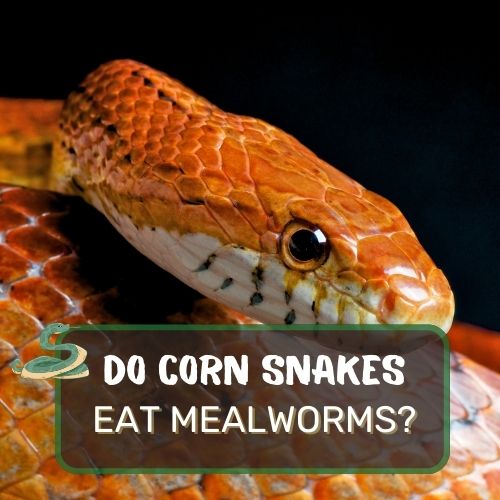
It’s a question that many reptile enthusiasts and corn snake owners grapple with.
Navigating the dietary needs of these captivating creatures can be a maze of information.
In this article, we delve deep into the world of corn snakes and their potential diet of mealworms.
We’ve sifted through various factors, from the nutritional benefits of mealworms to potential risks and feeding guidelines.
By the end of this read, you’ll have a comprehensive understanding of whether these wriggly treats are suitable for your slithery friend and how to offer them safely.
Dive in and let’s demystify the corn snake diet together!
Table of Contents
Can Corn Snakes Eat Mealworms? (Summary)
Yes, corn snakes can eat mealworms. Mealworms can serve as a supplementary source of protein and nutrients for corn snakes. However, they shouldn’t replace the primary diet of rodents, like mice, which provide a more comprehensive nutritional profile. When offering mealworms, it’s essential to ensure they are appropriately sized and sourced from reputable suppliers to avoid potential toxins or parasites. Additionally, the hard exoskeleton of mealworms can sometimes pose a risk of impaction, so they should be given in moderation. Always monitor your snake’s behavior and health when introducing any new food to their diet.
Key Points to Remember When Feeding Mealworms

There’s a lot more to it than just tossing a handful of wriggly worms into your snake’s enclosure. Let’s dive into the nitty-gritty of feeding mealworms to our slithering friends.
Moderation is key.
Imagine indulging in your favorite treat every single day. Sounds tempting, right? But soon, you’d probably start feeling a bit off-balance. It’s the same for corn snakes.
While mealworms are a delightful snack and a source of essential nutrients, they shouldn’t be the main course. Think of them as the occasional dessert rather than the main meal.
Importance of appropriate mealworm size.
Size matters, especially when it comes to feeding your corn snake. Just as you wouldn’t try to swallow a whole watermelon, you shouldn’t give your snake a mealworm that’s too big.
On the flip side, tiny mealworms might not offer enough nutrition. It’s all about finding that Goldilocks zone: not too big, not too small, but just right.
Buying from reputable sources.
You wouldn’t buy sushi from a sketchy back-alley vendor, would you? The same principle applies to buying mealworms.
Ensure you’re getting them from a reputable source to avoid any potential toxins or parasites. Remember, a healthy mealworm means a healthy snake.
Monitoring snake behavior to prevent overconsumption.
Corn snakes can sometimes get a little too enthusiastic about their food, especially when it’s something as tasty as mealworms. Keep an eye on your snake’s behavior.
If they’re gobbling up mealworms like there’s no tomorrow, it might be time to cut back a bit.
Nutritional Benefits of Mealworms
Now that we’ve covered the basics let’s delve into the nutritional aspect of mealworms. Why are they considered a good snack for corn snakes?

Protein and fat content.
Mealworms are like the protein bars of the reptile world. They’re packed with protein, which is essential for the growth and development of corn snakes.
And the fat?
It’s a great energy source. But remember, just like humans shouldn’t live solely on protein bars, corn snakes need a varied diet.
Low levels of calcium and phosphorus.
Here’s a fun fact: too much calcium and phosphorus can be problematic for snakes. Luckily, mealworms have low levels of these minerals, making them a balanced food option.
It’s like having a dessert that’s not too sweet but just sweet enough.
Comparison with other prey items.
While mealworms are a great snack, they shouldn’t replace other prey items in a corn snake’s diet. Think of them as the side dish to the main course of mice or rats.
They complement the primary food source, ensuring your snake gets all the nutrients it needs.
Mealworms are a fantastic addition to a corn snake’s diet, but they should be given thoughtfully and in moderation. By understanding their nutritional benefits and potential risks, you can ensure your snake leads a healthy and happy life. Happy feeding!
Risks and Precautions with Mealworms

Feeding mealworms to corn snakes isn’t as straightforward as it might seem. While they offer numerous benefits, there are also potential risks involved.
It’s like giving a child a new toy; it’s fun and exciting, but you need to ensure they don’t swallow any small parts. Let’s delve into some of the risks and precautions associated with feeding mealworms to corn snakes.
Potential for impaction due to hard exoskeleton.
Mealworms come with a hard outer shell, known as an exoskeleton. While it’s crunchy and might seem like a delightful treat for your snake, there’s a hidden danger.
This exoskeleton can be tough to digest, especially if the snake consumes a large number of mealworms.
This can lead to impaction, a condition where the snake’s digestive tract gets blocked. It’s similar to us humans getting a nasty bout of indigestion after overindulging in too much junk food.
The difference? For snakes, this can be life-threatening.
Risks of parasites in mealworms.
Everything in nature comes with its set of baggage, and mealworms are no exception. They can sometimes carry parasites, which, if ingested, can harm your snake.
It’s akin to us eating contaminated food and getting food poisoning. This is why it’s crucial to source mealworms from reputable suppliers. It’s always better to be safe than sorry.
Importance of moderation and size consideration.
We’ve touched on this before, but it’s worth reiterating. Moderation is key when feeding mealworms to corn snakes. It’s tempting to give your snake a treat, especially when they seem to enjoy it so much.
But overfeeding can lead to various health issues, including the aforementioned impaction. Additionally, the size of the mealworm matters.
Younger snakes might struggle with larger mealworms, while adult snakes might not get enough nutrition from tiny ones. It’s all about striking the right balance.
In essence, while mealworms can be a nutritious treat for corn snakes, they come with their set of challenges.
By being aware of these risks and taking the necessary precautions, you can ensure your slithery friend stays healthy and content. Always remember, a well-informed snake owner is a good snake owner!
Natural Diet of Corn Snakes
When you look at a corn snake, with its slender body and mesmerizing patterns, it’s easy to forget that these creatures are skilled hunters in the wild.
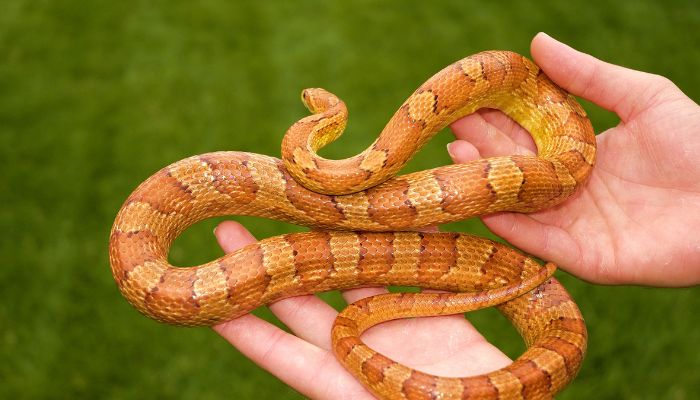
Their diet is a testament to their predatory nature and the evolutionary adaptations they’ve developed over millennia. Let’s dive into the fascinating world of what corn snakes munch on in their natural habitat.
Corn snakes as constrictors.
First things first, corn snakes are constrictors. This means they don’t rely on venom to subdue their prey. Instead, they use their powerful bodies to wrap around and squeeze their prey, restricting its ability to breathe.
It’s a bit like a wrestler using a chokehold to pin down an opponent. The snake’s constriction is so effective that the prey often succumbs within a few minutes. It’s a testament to the corn snake’s strength and hunting prowess.
Their primary diet: rodents.
In the wild, corn snakes have a particular fondness for rodents. Mice, rats, and other small mammals are their go-to meals.
Imagine having a favorite restaurant that you frequent; for corn snakes, the rodent world is their favorite dining spot.
These snakes have evolved to be expert rodent hunters, using their keen senses to track down and capture these quick and elusive creatures.
The role of rodents in providing essential nutrients.
Rodents aren’t just a tasty treat for corn snakes; they’re also nutrition powerhouses. They provide the snakes with essential nutrients like proteins, fats, and vitamins.
It’s akin to us having a balanced meal with all the necessary food groups. The bones of the rodents offer calcium, their flesh provides protein, and the organs are rich in various vitamins and minerals.
This well-rounded diet ensures that corn snakes get everything they need to grow, reproduce, and stay healthy.
Alternative Foods for Corn Snakes
Corn snakes, with their adaptable nature, have a varied palate, especially in captivity. While rodents are their primary food source, there are other options that snake enthusiasts have explored over the years.
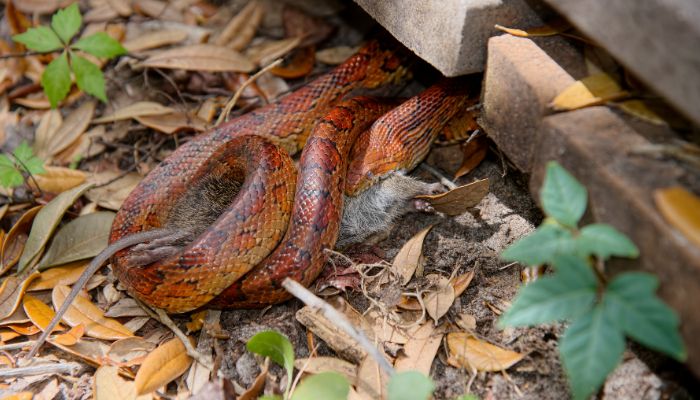
Let’s dive into some of these alternative foods and understand their role in a corn snake’s diet.
Pinkies for Corn Snakes
What are pinkies?
Pinkies are baby mice that are just a few days old, still hairless, and haven’t opened their eyes yet. They’re named for their pink, almost translucent skin.
For young or smaller corn snakes, pinkies can be an ideal food source due to their size and nutritional content.
How to prepare and feed them.
Pinkies should be purchased from reputable sources to ensure they’re disease-free. While they can be offered live, many snake owners opt for frozen pinkies. If using frozen, always thaw them to room temperature.
Never microwave them, as this can cause hot spots. Once thawed, use tongs to offer the pinkie to your snake, mimicking the movement to stimulate the snake’s predatory instincts.
Corn Snakes and Eggs
Occasional consumption in the wild.
In the wild, corn snakes have been known to raid bird nests and consume eggs occasionally. It’s like us indulging in a rare delicacy now and then. However, it’s not a staple in their diet.
The potential of quail eggs as a food source.
In captivity, some snake owners have experimented with quail eggs as an alternative food source. Quail eggs are small, making them an appropriate size for corn snakes.
They can be offered raw or boiled, but always ensure they’re fresh. The soft shell provides calcium, while the yolk and white offer protein and other nutrients.
Corn Snakes and Fish
Why fish isn’t a regular part of their diet.
Corn snakes are primarily terrestrial creatures. While they might encounter fish in the wild, it’s not a regular part of their diet. Their hunting skills are tailored more towards catching rodents and other land-based prey.
Nutritional differences between fish and rodents.
Fish offer a different nutritional profile compared to rodents. They’re rich in omega-3 fatty acids but might lack some of the essential nutrients that rodents provide, like certain vitamins and minerals.
If offering fish, it should be an occasional treat and not a staple. Always ensure the fish is fresh and free from any contaminants.
Corn Snakes and Insects
Why insects aren’t recognized as food.
Insects, while abundant, aren’t a recognized food source for corn snakes. Their size and nutritional content don’t match the needs of these snakes. It’s like us trying to fill up on just lettuce; it’s not going to work.
The limited role of earthworms in their diet.
While insects might not be on the menu, some corn snakes have shown interest in earthworms. Earthworms can be a source of protein, but they lack the comprehensive nutritional profile that rodents offer.
If you’re considering offering earthworms, ensure they’re from a clean source and free from pesticides. However, they should be seen as an occasional treat rather than a dietary staple.
Rodents remain the primary food source for corn snakes, exploring alternative foods can provide variety and enrichment.
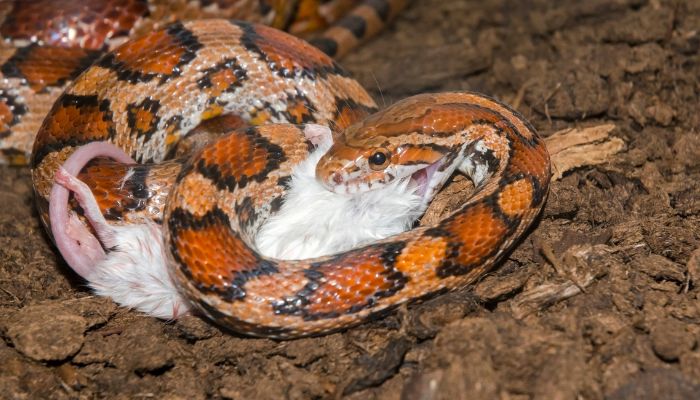
However, always ensure that any alternative is safe, nutritious, and appropriate for your snake’s size and age. After all, a happy snake is a well-fed snake!
Feeding Guidelines for Corn Snakes
Feeding a corn snake isn’t just about what you feed them, but also how and when. Just like humans have dietary guidelines, corn snakes have their own set of rules to ensure they remain healthy and thrive.
Let’s delve into these guidelines and understand the nuances of feeding these fascinating creatures.
Baby vs. Adult Corn Snakes
Similarities in their diet.
Whether a baby or an adult, corn snakes primarily rely on rodents for their nutritional needs. Both young and mature snakes benefit from the protein, fats, and other essential nutrients that rodents provide.
Differences in portion sizes.
While the type of food remains consistent, the portion sizes differ. Baby corn snakes, being smaller, typically start with pinkies. As they grow, they transition to larger prey like fuzzies, hoppers, and eventually, adult mice.
Adult corn snakes, with their larger size, require bigger prey like full-grown mice or even small rats.
How Much to Feed?
Guidelines based on the snake’s weight.
A general guideline is to feed your corn snake a rodent that’s about the same width as the snake’s widest part. This ensures the prey is neither too big nor too small.
Additionally, weighing your snake can provide insights. Typically, a meal should be about 10-15% of the snake’s body weight.
Importance of monitoring their weight.
Regularly weighing your snake helps track its growth and health. If your snake is gaining too much weight, it might be overfed. Conversely, weight loss can indicate health issues or dietary insufficiencies.
Reasons for Refusal to Eat
Corn snakes, like all creatures, can sometimes be fussy eaters. Reasons for refusal can range from shedding (their vision gets cloudy, making them less inclined to eat) to sickness.
Environmental factors, like incorrect temperature or stress, can also impact their appetite. Always monitor your snake’s behavior and consult a vet if the refusal to eat persists or if you notice other signs of distress.
In essence, feeding a corn snake is a blend of science and art. By understanding their needs and observing their behavior, you can ensure they lead a long, healthy, and happy life. Happy feeding!
FAQ
Ah, the world of corn snakes is filled with questions, especially for new snake parents. Let’s tackle some of the most frequently asked questions about these slithery companions.
Is there anything I can feed my corn snake other than mice?
Absolutely! While mice are a staple, corn snakes can also eat rats (especially as they grow larger), quail eggs, and certain insects like mealworms. However, these should be supplementary to their primary diet of rodents. Always ensure any alternative is appropriately sized and sourced from reputable suppliers.
What to avoid with corn snakes?
Avoid feeding your corn snake wild-caught prey, as they can carry diseases or parasites. Also, steer clear of feeding them prey that’s too large, as it can lead to digestive issues. In terms of environment, avoid extreme temperatures and ensure they have a stress-free habitat.
How long can a corn snake go without eating?
Adult corn snakes can go for a couple of weeks without eating, but it’s not ideal. Younger snakes should eat more frequently. However, if your snake refuses food, it could be due to shedding, environmental factors, or health issues.
How do I know if my corn snake is still hungry?
Corn snakes will show interest in food by being more active, exploring their enclosure, or reacting to movement outside their habitat. However, it’s essential to stick to a feeding schedule and not overfeed, even if they seem interested in more food.
Conclusion
Alright, snake charmer, let’s wrap this up with the same flair we started! So, you came here wondering, “Can corn snakes eat mealworms?” and boy, did we take a roller-coaster ride through the world of slithery diets.
We dived into the crunchy details of mealworm munching, navigated the rodent realm, and even had a brief rendezvous with alternative snake snacks. Who knew snake dining could be so… gourmet?
Remember, every corn snake is a unique diner with its own tastes. While mealworms can be on the menu, it’s all about balance, variety, and a sprinkle of love.
Keep observing, keep learning, and most importantly, keep laughing at the quirks of your reptilian buddy. After all, they might just be waiting for the next episode of “What’s for Dinner?” in their enclosure.
Stay curious, stay informed, and always serve your snake’s meals with a side of passion and humor. Happy feeding, and may your corn snake’s belly always be contentedly round (but not too round)!

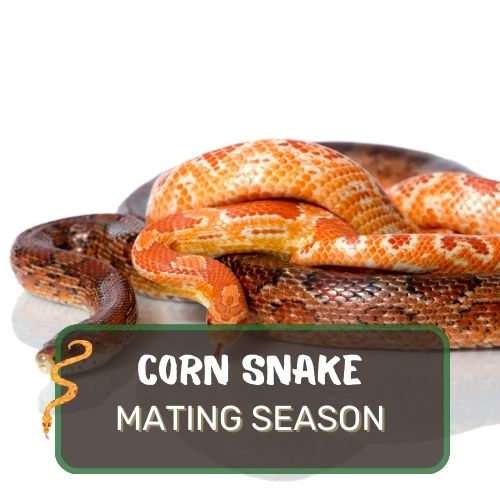
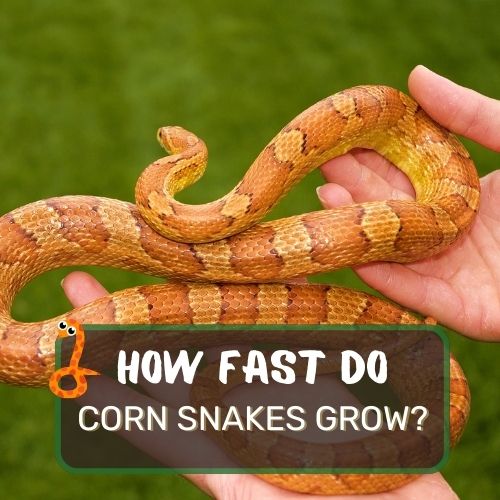
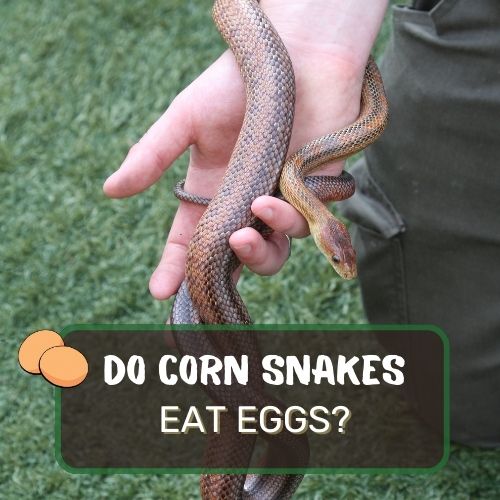
0 Comments